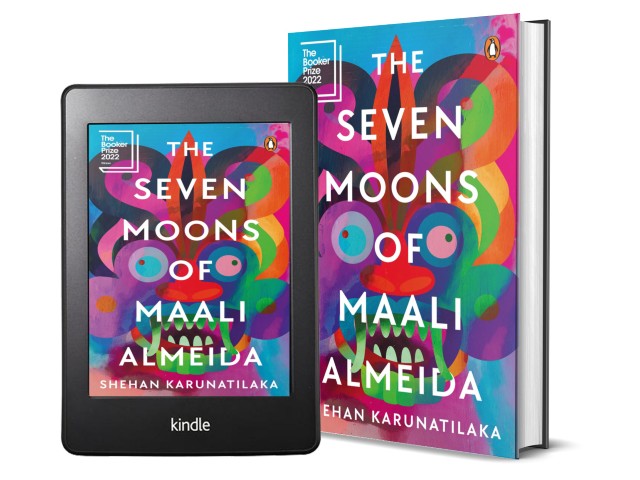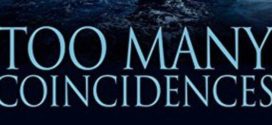As the stress of daily life increases day by day, you may be turning to literature for entertainment and relief like most readers around the world. But there are also the books written and published every year that serve as a mirror, a record and an assessment of our collective lives and the path countries take over decades and generations. Author Shehan Karunatilaka‘s second book Seven Moons of Maali Almeida is one such example. The author hails from Sri Lanka and has lived around the world. In this book, he charts a life of a war photographer.
| Book Title | : | The seven moons of Maali Almeida |
| Author | : | Shehan Karunatilaka |
| Published by | : | Sort Of Books Penguin |
| # of Pages | : | 386 (Paperback) 406; 2909 KB (Kindle EBook) |
| # of Chapters | : | 7 |
| Purchase Link(s) | : |
The book won the 2022 Booker Prize and has been widely praised for its storytelling and powerful narrative. Recently, I had a chance to read this book, and here are our thoughts on this book on behalf of Team Thinkerviews.
This Is Here In For You
Book Cover:
Let us take a look at the cover page of this book.

The Seven Moons of Maali Almeida by Shehan Karunatilaka | Book Cover
The cover page features an abstract image forming a demonic face in bright colours and swirling spaces. It is a vibrant cover page conveying the feel of surreal premise of the content within the book, while still managing to keep the bright, colourful image that may attract casual browsers looking for exotic readings.
Storyline:
Malinda Almeida Kabalana – known as Maali Almeida thinks he is in a dream. But soon he realises that, in fact, he is dead, and have woken up in a surreal space where multitudes of humanity are floating in variety of afterlife forms.
As he slowly gets around this afterlife lobby – a few facts are revealed. Firstly, he has a timeline of seven moons. If within this period, he sorts out his head and decides to move on, he will be offered the Light. Otherwise, he will be literally condemned here for eternity.
And so the journey begins, as Maali tries to make sense of this place, while also trying to remember how he got here. Maali was a son of Sinhali father and a half-Burgher, half-Tamil mother. His father left while he was still a young boy, he doesn’t get on with his mother and he has been chronicler photographer of the violence and warfare that has been tearing Sri Lanka apart for almost all of his adult life.
Maali lived with Jaki and DD – Dilan Dharmendran – the love of his life. But, Maali was never faithful to Dilan and Maali was an incorrigible gambler. He was known as the best fixer in Colombo and had worked for every side of the warring fraction at one time or another. As such, he had some dynamite photos that could identify political criminals, warlors and terrorists, if published.
Maali had left these photos in a shoe box and now Jaki, DD and other interested parties try to find these. The phots are discovered but are captured by the minister who features in one of them. So now Maali tries to influence Jaki to find the negatives, and she does. The photos are printed and are put up as an exhibition in an art gallery in Colombo.
But what about the continued brutality all around them? Will Jaki have to pay the price for being Maali’s friend? Who murdered Maali? And is there an end to this surreal afterlife that he is in?
Views and Reviews:
I have sketched the storyline briefly above. However, it is difficult to describe the surreal world in which these events take place for Maali, its complexity, its powerful ‘second-person’ storytelling, just through the storyline. It is a whole life of a not-so-perfect man, a self-proclaimed gambler, promiscuous homosexual, conflicted man who spends the adults life witnessing horrors of what men can do to other men. And instead of a singular timeline, the story and its characters are revealed layer by layer.
The prominent thread is the internal conflict that has taken over Sri Lanka and now overshadows the natural beauty and abundance of this island, which seems to be on the edge of imploding and heading to anarchy. In one of the passages the author sums of the past, present and future problems that can be laid at the door of others, although eventually that does not change the suffering of the people caught in it:
This island has always been connected. We traded spices, gems and slaves with Rome and Persia long before history books were invented. Our people too have always been tradable. Look at today. The rich send their kids to London, the poor send their wives to Saudi. European paedophiles sun on our beaches, Canadian refugees fund our terror, Israeli tanks kill our young and Japanese salt poisons our food. The British sell us guns and the Americans train our torturers. What chance do any of us have?
The greater political forces and conflicts make the background in which Maali’s life plays out. He has two great people in his life – DD and Jaki. DD is a young man hailing from rich, influential family background, foreign educated lawyer, taking up environmental causes. And then there is Jaki, a girl brought up in South London, but now living in Colombo. She has been in love with Maali and when it is clear that they are not meant to be, becomes his best friend in life and in death.
But in spite of living in the same house, they don’t know Maali’s secrets. And so the author uses the cleverly constructed world of demons of afterlife through which Maali tries to contact the two to get his unpublished photographs of his political masters, arms dealers and the warlords can be exposed. And all through this, we also see the savage ways in which people disappear, are murdered, hacked to pieces, thrown into lakes or incinerated while the city is under curfew.
And through it all, you can sense the despair, the anger of all the people who are caught in this conflict. Below lines from the book are samples of the multiple discussions about religion, afterlife, lottery of birth and whether there is any purpose or reason to our existence at all:
Evil is not what we should fear. Creatures with power acting in their own interest, organized collectives of evil doers who think they are performing the work of the righteous: that is what should make us shudder.
For atheists there ae only moral choices. Accept that we are alone and strive to create heaven on earth. Or accept that no one’s watching and do whatever the hell you like. The latter is by far easier.
And if you think, how can a country go on, how do people go on? There are so many conflicts all around us in the world – based on race, religion, colour, any perceived difference-
People have always suffered. You can legislate against it, reduce it at a macro level. But you will never eliminate it. The best you hope for is that bad stuff doesn’t happen to anyone you know.
This book is complex, richly detailed and layered and not something you can finish reading overnight. It is confronting and thought-provoking and there is a thread of anger and despair in it about the futility of it all and yet at the end a little life-affirming para, that the best thing about life is its not nothing….
Summary:
A book that could be seen as murder mystery set in a wide, complex back-drop of political warfare, terrorism and internal conflicts of a beautiful country…
ThinkerViews Rating:
Around 8 stars out of 10.
Quick Purchase Links:
- Buy - The seven moons of Maali Almeida by Shehan Karunatilaka - Paperback - Amazon IN
- Buy - The seven moons of Maali Almeida by Shehan Karunatilaka - Kindle EBook - Amazon IN
- Buy - The seven moons of Maali Almeida by Shehan Karunatilaka - Paperback - Amazon US
Over To You:
If you already have read the book do share your remarks and thoughts via comments below. Does this review help you in making your decision to buy or read the book? Do not forget to share this article with your friends over various social networks. Please follow/subscribe us on various Social networks like Twitter, Facebook, YouTube, Spotify, Amazon Prime Music, Audible, and others. And yes, you may like to subscribe to our RSS feeds to get latest updates for the site to land right in your mail box.
 ThinkerViews – Views And Reviews Personal views and reviews for books, magazines, tv serials, movies, websites, technical stuff and more.
ThinkerViews – Views And Reviews Personal views and reviews for books, magazines, tv serials, movies, websites, technical stuff and more.



